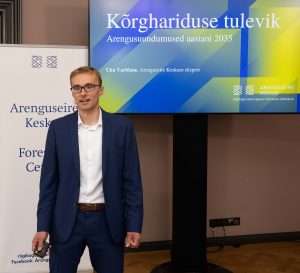According to the Foresight Centre report “Long-term Impact of the Russo-Ukrainian War on Estonia. Population, Integration, Foreign Trade”, which was published today, Estonia must take into account that many war refugees will remain in Estonia for an indefinite time. The Centre drew up scenarios about 10,000, 30,000 and 60,000 war refugees remaining in Estonia.
News
According to the Foresight Centre brief report “Long-Term Prospects of Integration of War Refugees in Estonia”, the experts of integration think that the war refugees who have arrived in Estonia are more likely to integrate with the Estonian community than with another language community. Integration would be supported above all by a quick entry into the labour market, but experts are more sceptical about the capacity of the Estonian social and education system to provide sufficient support for integration.
Completely ending import of Russian and Belarus goods would have the greatest impact on the logistics, metal, and wood industries, where the replacement goods from other countries are more than 25% more expensive, shows the Foresight Centre brief report “Impact of ending import from Russia and Belarus on economic sectors”. Reshaping supply chains would increase costs for businesses and require keeping larger stocks to ground the risks.
Estonian businesses who depend on the goods and raw materials imported from Russia and Belarus should ground their business risks in good time, shows the Foresight Centre brief report “Impact of replacing imports from Russia and Belarus across categories of goods”. Completely ending import from these countries would entail a EUR 860 million additional cost to Estonian businesses in 2021 prices.
In order to remain competitive, higher education institutions will need to adapt faster to the needs of the education market, says the Foresight Centre Report “The Future of Higher Education. Development Trends until 2035”, published yesterday. In the next decade, the need for continuing education will increase significantly, which will require greater flexibility from higher education institutions and the state in regard to forms of study.
In order to achieve optimal financing, students should cover 20% of the higher education expenditure, says the Foresight Centre Report “The Future of Higher Education. Development Trends until 2035”, published today, on 8 June.
The sustainability of Estonia’s transport system mostly depends on Tallinn and Harju County, which contribute nearly 50% of the total mileage of all the vehicles in Estonia, says the report of the Foresight Centre “The Future of Mobility. Development trends up to 2035“, which is now published in English.
Estonia boasts a higher percentage of university graduates than most Central and Eastern European countries, yet compared to other OECD members, our students work more while studying and also drop out more often, shows the Foresight Centre brief report “Higher Education in Estonia: Situation and Challenges”.
The question of funding higher education is becoming an increasingly hot topic in Estonia as the annual deficit is already exceeding EUR 100 million. Today, 1 February, the Foresight Centre is organising a webinar “Who should foot the bill for higher education?” to discuss the main trends in funding higher education in European countries.
Estonian residents underestimate the risk of needing long-term care according to the Foresight Centre report The Need for Long-Term Care in Estonia. One in two of the now 65-year-old Estonian residents will need long-term care services in the future.

 An independent think tank at the Riigikogu
An independent think tank at the Riigikogu 







